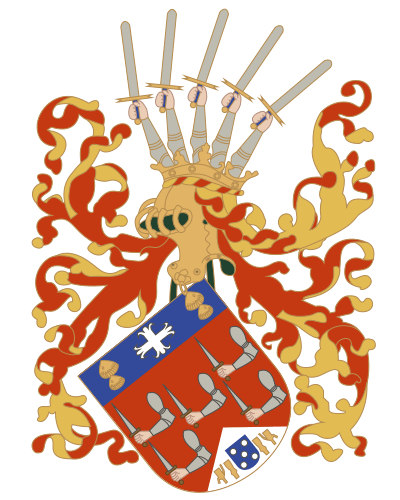Kimpanzu facts for kids
| House of Kimpanzu Mpanzu kanda |
|||
|---|---|---|---|
Quick facts for kids  |
|||
| Country: |
Kingdom of Ngoyo Kingdom of Ndongo |
||
| Parent House: | House of Kinkanga | ||
| Titles: |
List
King of Kongo
King of Loango King of Kakongo King of Ngoyo King on this side of the Zaire and beyond it King of Nkondo King of Mbamba-Lovata Lord of the Ambundu Lord of Angola Lord of Aquisima Lord of Musuru Lord of Matamba Lord of Malilu Lord of Musuko Lord of Anzizo Lord of the conquest of Pangu-Alumbu |
||
| Founder: | Álvaro V | ||
| Final Ruler: | Pedro V | ||
| Founding Year: | 27 February 1636 | ||
The Kimpanzu were a powerful family, or kanda, in the Kingdom of Kongo. They were one of the main groups from which the kings of Kongo were chosen. This happened during the 17th century and after the kingdom was brought back together by Pedro IV. People still remember the Kimpanzu today. There's even an old saying that goes: "Kinkanga, Kimpanzu and Kinlaza are the three stones on which Kongo cooked." This shows how important they were!
Contents
How the Kimpanzu Family Started
The Kimpanzu family gets its name from King Álvaro V. He became king in 1636. Álvaro V was the half-brother of the younger King Álvaro IV. It's not clear if they had the same father, Álvaro III. After Álvaro IV passed away, Álvaro V took the throne. This marked the beginning of the Kimpanzu family's time in power.
When the Kimpanzu Lost Power
The Kimpanzu family's rule in Kongo didn't last very long. A civil war continued between supporters of the Count of Soyo and a noble named Gregorio. The Count and his friends, two Jesuit brothers who used to support Álvaro IV, won the conflict.
These brothers, Álvaro Nimi and Garcia Nkanga, defeated Álvaro V. They then started their own family to rule, known as the House of Kinlaza. The Kimpanzu who didn't want to accept the new rulers went south. They found safety in the county of Soyo.
Kimpanzu Against the Kinlaza
The Kimpanzu family moved to the mountains in the south of Soyo. At that time, Daniel da Silva ruled Soyo. Even though Soyo was part of Kongo, it had become more and more independent over time. Soyo was very important because of its strong military and its role in choosing kings.
From 1625 to 1641, the Count of Soyo was always someone loyal to the Kinlaza family. But when Count Paulo died in 1641, Daniel da Silva took over. Daniel da Silva was still upset with the brothers who had removed him from his position as Duke of Mbamba. So, he made Soyo a safe place for anyone who supported the Kimpanzu.
The Silva family became friends and protectors of the Kimpanzu. This allowed Kimpanzu supporters to plan against the Kinlaza from a place called Mbamba Luvota. Soyo wanted to be completely independent from Kongo. They supported different groups who were against the Kinlaza, including the remaining members of the House of Nsundi.
This led to a failed attempt to remove Garcia II from power. The Nsundi family, called Nkanka a Mvika, was defeated by Garcia. They stopped existing by the 1660s. However, the Kimpanzu were too far away for Garcia to completely get rid of them.
Kimpanzu After the Kongo Civil War
Many Kimpanzu members were close allies with Soyo during the early part of the civil war. During this time, their leader, Suzana de Nóbrega, stayed in the province of Luvota, near Soyo's southern border. They strongly opposed the Kinlaza family in politics and even in battles. This happened before, during, and after the Kongo Civil War, which lasted from 1665 to 1709.
To bring Kongo back together, another family called the Água Rosada arranged for the throne of Kongo to switch between the two Kinlaza branches and the Kimpanzu. The Kimpanzu returned to power when Manuel II was chosen as king after Pedro IV died in 1718.
The last important Kimpanzu to hold office was the first King Pedro V. He passed away in 1779. However, his regent and supporters tried to keep a successor from his family in power. There were other unknown Kimpanzu who claimed to be kings. Their burial place in Sembo was visited in 1859 by a German explorer named Adolf Bastian.

